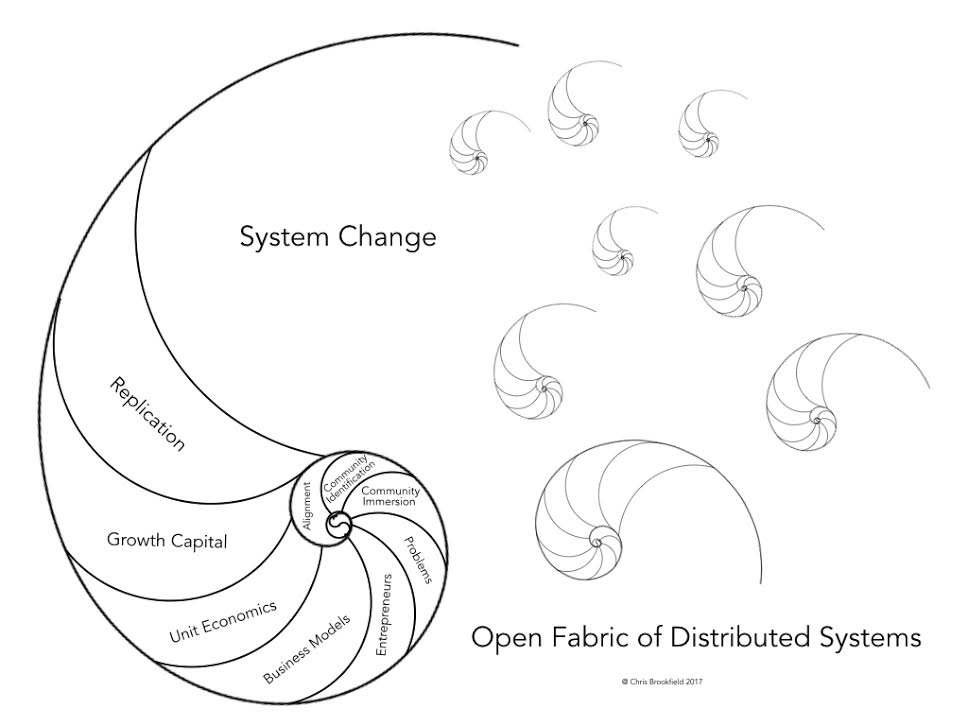Big Misunderstanding on MSAs
The Medicare Set-Aside issue should be front and center for all parties resolving liability insurance claims, not just in workers' comp.

The Medicare Set-Aside issue should be front and center for all parties resolving liability insurance claims, not just in workers' comp.

Get Involved
Our authors are what set Insurance Thought Leadership apart.
|
Partner with us
We’d love to talk to you about how we can improve your marketing ROI.
|

John V. Cattie, Jr. is the founding partner of Cattie, P.L.L.C., a law firm dedicated to helping its clients minimize/extinguish future medical exposure to the federal government.
To maximize the value of a conference requires both preparation and some disciplined follow-through.

Get Involved
Our authors are what set Insurance Thought Leadership apart.
|
Partner with us
We’d love to talk to you about how we can improve your marketing ROI.
|
More than 5,000 companies now offer high-tech marketing solutions. Finding the right ones requires a remarkably low-tech approach.

Get Involved
Our authors are what set Insurance Thought Leadership apart.
|
Partner with us
We’d love to talk to you about how we can improve your marketing ROI.
|

Amy Radin is a transformation strategist, a scholar-practitioner at Columbia University and an executive adviser.
She partners with senior executives to navigate complex organizational transformations, bringing fresh perspectives shaped by decades of experience across regulated industries and emerging technology landscapes. As a strategic adviser, keynote speaker and workshop facilitator, she helps leaders translate ambitious visions into tangible results that align with evolving stakeholder expectations.
At Columbia University's School of Professional Studies, Radin serves as a scholar-practitioner, where she designed and teaches strategic advocacy in the MS Technology Management program. This role exemplifies her commitment to bridging academic insights with practical business applications, particularly crucial as organizations navigate the complexities of Industry 5.0.
Her approach challenges traditional change management paradigms, introducing frameworks that embrace the realities of today's business environment – from AI and advanced analytics to shifting workforce dynamics. Her methodology, refined through extensive corporate leadership experience, enables executives to build the capabilities needed to drive sustainable transformation in highly regulated environments.
As a member of the Fast Company Executive Board and author of the award-winning book, "The Change Maker's Playbook: How to Seek, Seed and Scale Innovation in Any Company," Radin regularly shares insights that help leaders reimagine their approach to organizational change. Her thought leadership draws from both her scholarly work and hands-on experience implementing transformative initiatives in complex business environments.
Previously, she held senior roles at American Express, served as chief digital officer and one of the corporate world’s first chief innovation officers at Citi and was chief marketing officer at AXA (now Equitable) in the U.S.
Radin holds degrees from Wesleyan University and the Wharton School.
To explore collaboration opportunities or learn more about her work, visit her website or connect with her on LinkedIn.
Only 55% of earnings stem from factors that businesses can directly control -- and there's a huge opportunity in that other 45%.

Get Involved
Our authors are what set Insurance Thought Leadership apart.
|
Partner with us
We’d love to talk to you about how we can improve your marketing ROI.
|

Colin Price is an executive vice-president and global managing partner of the Leadership Consulting practice at Heidrick & Struggles.
As more records are kept online and more breaches occur, federal authorities are stepping up enforcement for violations of privacy rules.

Get Involved
Our authors are what set Insurance Thought Leadership apart.
|
Partner with us
We’d love to talk to you about how we can improve your marketing ROI.
|

Byron Acohido is a business journalist who has been writing about cybersecurity and privacy since 2004, and currently blogs at LastWatchdog.com.
WannaCry signifies two developments of profound consequence to company decision-makers monitoring the cybersecurity threat landscape.

Get Involved
Our authors are what set Insurance Thought Leadership apart.
|
Partner with us
We’d love to talk to you about how we can improve your marketing ROI.
|

Byron Acohido is a business journalist who has been writing about cybersecurity and privacy since 2004, and currently blogs at LastWatchdog.com.
We are exiting the pre-digital age and entering a post-digital environment where survival will be measured by rapid adaptability.

Get Involved
Our authors are what set Insurance Thought Leadership apart.
|
Partner with us
We’d love to talk to you about how we can improve your marketing ROI.
|

Denise Garth is senior vice president, strategic marketing, responsible for leading marketing, industry relations and innovation in support of Majesco's client-centric strategy.
A blockchain-based, industry-wide platform will be the catalyst for entirely new paradigms for selling and administering insurance.

Get Involved
Our authors are what set Insurance Thought Leadership apart.
|
Partner with us
We’d love to talk to you about how we can improve your marketing ROI.
|

Mark Wales is a co-founder of Galileo Platforms, an insurtech company focused on Asia. He has more than 30 years’ experience in information technology in the financial services industry, substantially in life insurance, wealth management, funds management and investment banking.
Virtually nothing has been done regarding the way insurance information is shared via forms; workers' comp may be the leading problem.

Get Involved
Our authors are what set Insurance Thought Leadership apart.
|
Partner with us
We’d love to talk to you about how we can improve your marketing ROI.
|

Chet Gladkowski is an adviser for GoKnown.com which delivers next-generation distributed ledger technology with E2EE and flash-trading speeds to all internet-enabled devices, including smartphones, vehicles and IoT.
With 3 trillion reasons ($$) to protect the status quo, it should be no surprise that employing frontal assault on healthcare would be laughably ineffective.

 Graphic courtesy of Chris Brookfield[/caption]
The HRG believes sustainable investing requires focus on a particular region/sector with an eye towards social and economic benefits that reflect aligned values. It has a long-term focus that taps motivated local entrepreneurs to create businesses that enhances economic resilience which creates sustainable economic development (“Economic Development 3.0”). These emerging organizations are strengthened through local business and ultimately can create value for investors that ensures long-term resilience of local interests. We believe the path to optimizing health is a move away from centralized massive assets whether that is massive food production producing low-value food or massive medical centers that produce high volumes of low-value procedures (e.g., where 90% of spinal procedures were of no help). A strategy that is more aligned with community interests will deliver resilience, variability and locality that is part and parcel of Health 3.0.
See also: Healthcare Buyers Need Clearer Choices
I wrapped up by TEDx talk with the following that seems appropriate here:
Graphic courtesy of Chris Brookfield[/caption]
The HRG believes sustainable investing requires focus on a particular region/sector with an eye towards social and economic benefits that reflect aligned values. It has a long-term focus that taps motivated local entrepreneurs to create businesses that enhances economic resilience which creates sustainable economic development (“Economic Development 3.0”). These emerging organizations are strengthened through local business and ultimately can create value for investors that ensures long-term resilience of local interests. We believe the path to optimizing health is a move away from centralized massive assets whether that is massive food production producing low-value food or massive medical centers that produce high volumes of low-value procedures (e.g., where 90% of spinal procedures were of no help). A strategy that is more aligned with community interests will deliver resilience, variability and locality that is part and parcel of Health 3.0.
See also: Healthcare Buyers Need Clearer Choices
I wrapped up by TEDx talk with the following that seems appropriate here:
For too long, we’ve let healthcare crush the American Dream. We can’t stand for 20 more years of an economic depression for the middle class. No country has smarter or more compassionate nurses and doctors and no country has more innovators that have reinvented our country time and again. In every corner of healthcare, people went into healthcare for all the right reasons but perverse incentives and outdated approaches have shackled them. Whether we knew it or not, we all contributed to this mess. Now, it’s on us to fix it. When change happens community by community, it’s impossible to stop. Yes, healthcare stole the American Dream. But it’s absolutely possible to take it back. Join us to make it happen in your community.We are working on catalytic events to accelerate the change. The institute is helping raise awareness of the rising risk to corporations and boards that will compel them to act. In parallel, we continue work on The Big Heist film (think The Big Short for healthcare) that will wake up America to the greatest heist in American history. Please share Ted talk: Healthcare stole the American Dream. Here is how we take it back. Sign up for The Future Health Ecosystem Today newsletter to be in the know about healthcare's future.
Get Involved
Our authors are what set Insurance Thought Leadership apart.
|
Partner with us
We’d love to talk to you about how we can improve your marketing ROI.
|

Dave has a unique blend of HealthIT and consumer Internet leadership experience that is well suited to the bridging the gap between Health IT systems and individuals receiving care. Besides his role as CEO of Avado, he is a regular contributor to Reuters, TechCrunch, Forbes, Huffington Post, Washington Post, KevinMD and others.